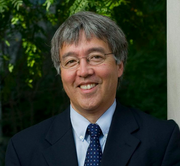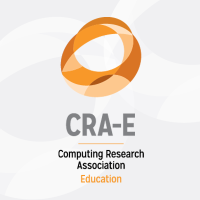CS in DC: Jim Kurose, Assistant Director, NSF, CISE
 Jim Kurose is an Assistant Director (AD) at the National Science Foundation (NSF), where he leads the Directorate of Computer and Information Science and Engineering (CISE) in its mission to uphold the nation’s leadership in scientific discovery and engineering innovation through its support of fundamental research and transformative advances in cyberinfrastructure. He is on leave from the University of Massachusetts, Amherst, where he is a distinguished professor in the College of Information and Computer Sciences.
Jim Kurose is an Assistant Director (AD) at the National Science Foundation (NSF), where he leads the Directorate of Computer and Information Science and Engineering (CISE) in its mission to uphold the nation’s leadership in scientific discovery and engineering innovation through its support of fundamental research and transformative advances in cyberinfrastructure. He is on leave from the University of Massachusetts, Amherst, where he is a distinguished professor in the College of Information and Computer Sciences.
What do you do in your current position?
I lead the CISE directorate—one of seven NSF directorates—with more than 140 staff and an FY 2016 annual funding of more than $935M. By some measures, CISE provides more than 80% of the federal funding for academic computer science research in our country. We do this by working closely with the CISE community to identify opportunities that will continue to transform not only our CISE discipline but other areas of science and engineering as well. I also work closely with the assistant directors of the other NSF directorates and with the Office of the Director. Beyond NSF, I work with folks from other federal agencies, industry, and international organizations—many of whom we partner with on solicitations. And I work with folks from the White House’s Office and Science and Technology Policy (OSTP) and Office and Management and Budget (OMB), as well as Congress. I think these broad and diverse interactions reflect the reach, importance, and impact of our discipline. I’ve been a faculty member at the University of Massachusetts for more than 30 years. When one of my kids was asked some years ago in school, “What does your father do?”, her answer was that I have a lot of meetings. In some sense, I guess that that’s still very much true.
What do you hope to accomplish in your time in D.C.?
It’s an incredibly exciting time to be in computer science. We’re seeing tremendous research advances within our core discipline, as well as synergistic collaborative research opportunities with many other disciplines. Computation and data analytics have become fundamental tools for scientists and engineers. Interest in CS in our nation’s high schools and enrollments in colleges and universities are booming. NSF will continue to develop programs that nurture, and build on, these activities.
During my time as CISE AD, I hope to enable the CISE community to make continued research advances within our core disciplines, as well as in synergistic collaborative research areas. Our community’s leadership in national initiatives, including Smart and Connected Communities, the National Strategic Computing Initiative, the National Robotics Initiative, the BRAIN Initiative, and the National Big Data Research and Development Initiative, is and will continue to be imperative. I also very much hope to expand activities to forge federal, university, and industrial partnerships, and to increase CISE’s collaboration with other agencies and with international partners. The role of our Division of Advanced Cyberinfrastructure (ACI) continues to be a NSF-wide priority, given the importance of cyberinfrastructure (computation, data, software, networks, and people) across all of science and engineering. Finally, with growing student interest and enrollments in CS in our nation’s colleges and universities, I hope to continue to nurture, and build on, this interest. A recent ACM Inroads article I wrote provides more context.
How can the computing community participate in your work?
NSF is unique among federal agencies in that our program directors and staff are very closely attuned to the research community. Many, like me, come from the community and are on temporary leave from their university while serving at NSF on an IPA [Inter-governmental Personnel Act]. It’s critical that our programs reflect the current needs of our community; we learn about those needs through workshops, proposal review panels, advisory committees, and many one-on-one meetings, so I encourage you to reach out to NSF to serve on panels, to participate in workshops and advisory committees, and to visit us and others in government—be involved! Even more, consider an IPA assignment at NSF or at another federal agency. I (and others who have been featured in this CRN column) can promise it’ll be an interesting, challenging, and rewarding experience!
What are your thoughts on the experience so far?
It’s been extremely interesting! Amazing! Fabulous! I really do consider it a privilege to be able to serve our community in this position. My colleagues in CISE, in NSF, and elsewhere in the government are amazing! Starting any new job can be like drinking from a fire hose, and this job was certainly no exception. But it’s been 110% engaging! With a full year now behind me, I hope that my experience can help really move the needle in some of the areas noted above, and to continue NSF’s stellar track record for advancing transformative research through our investments in people, ideas, and infrastructure.
As part of CRA’s mission to help the computing research community become more engaged in policymaking and programmatic roles in D.C., we’ve embarked on a new effort to highlight the work of members of the computing research community who have taken the plunge and chosen to serve the nation in policymaking roles. This new column will provide these policymaking researchers an opportunity to highlight work that the community should know about, as well as raise awareness of the types of opportunities that are available to those interested in serving.








